The Clovis people were long believed to be the very first settlers on North American soil. Over time, however, this was debunked by other archeological discoveries. That doesn’t make this ancient culture any less interesting. Actually, they were one of the few that were able to spread so far so rapidly. Additionally, recent research shows that almost all Native American people are related to the ancient Clovis people.
How is that even possible? And do we know anything more about these mysterious people that lived over 10,000 years ago?
Table of Contents
Who Were the Clovis People?
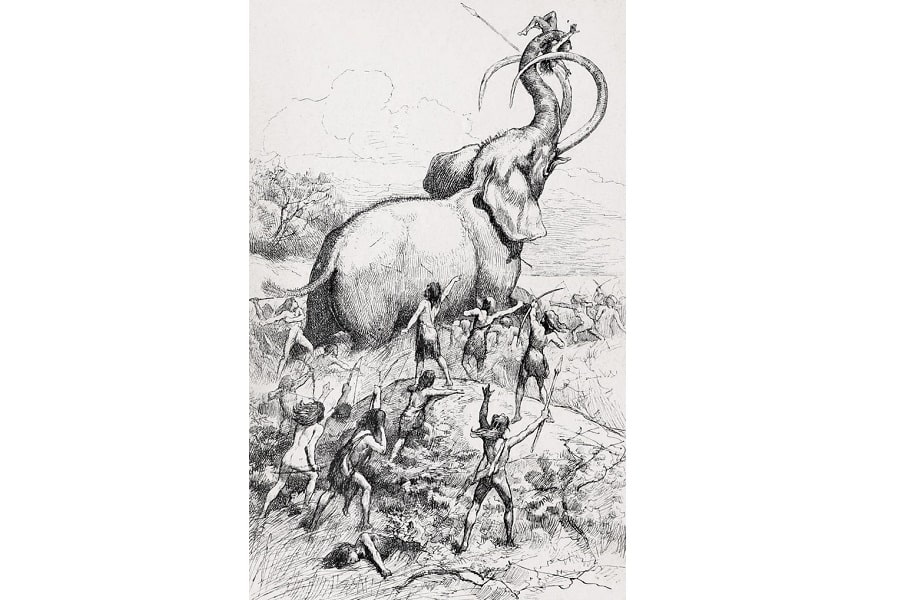
The Clovis people are one of the oldest known cultures in ancient North America. About 80% of the DNA in Clovis people corresponds exactly with modern-day Native North American peoples. So it’s safe to say that they were among the most prominent cultures around 13,000 years ago. It’s a bit unclear how long the Clovis era lasted, but some estimates are only as little as 300 years.
Still, the average estimates are that they lived between 13,400 and 12,900 years ago. The Clovis people of North America were notorious for their ‘big game hunting’, which included the killing of mammoths.
How does one kill a mammoth, you wonder? The power was in their numbers, as is evident from the multiple ‘Clovis points’ that were found in skeletons of mammoths in Clovis territory.
Not the First
Really, there were two things that scientists related to the Clovis people. One was that they were the earliest human presence in the Americas. Second was that they were busy colonizing ice age America at their time of existence; to the point that all corners of the Americas were populated by the group. Unfortunately, both are debunked by now.
To the first point, they were not the first people in America because later archeological sites have been discovered in the meantime. Some date back as far as 24,000 years ago. The first people could have also come by boat, about 10,000 years prior to the start of the Clovis era.
READ MORE: Who Discovered America: The First People Who Reached the Americas
The Clovis, on the other hand, used a different method to cross into North America. They most probably used a land bridge.
The fact that people already arrived in the Americas around 10,000 earlier also makes the assumption of their spread also questionable. Recent research indicates that their spread over the whole of the Americas is unlikely due to a combination of the short time span of the Clovis era and the potential predecessors of the Clovis people.
The idea that all of the Americas were first populated by the Clovis people is therefore inaccurate; ample of pre-Clovis migrations have been documented by this point. The Clovis populations were most likely concentrated in the modern-day United States and Mexico.
Still, they were able to spread rather fast across large spaces, which is partly why many scientists are fascinated with the Clovis culture. Actually, they might be the most fascinating culture when it comes to pre-historic American cultures for the simple fact that they are the ones we know the most about.
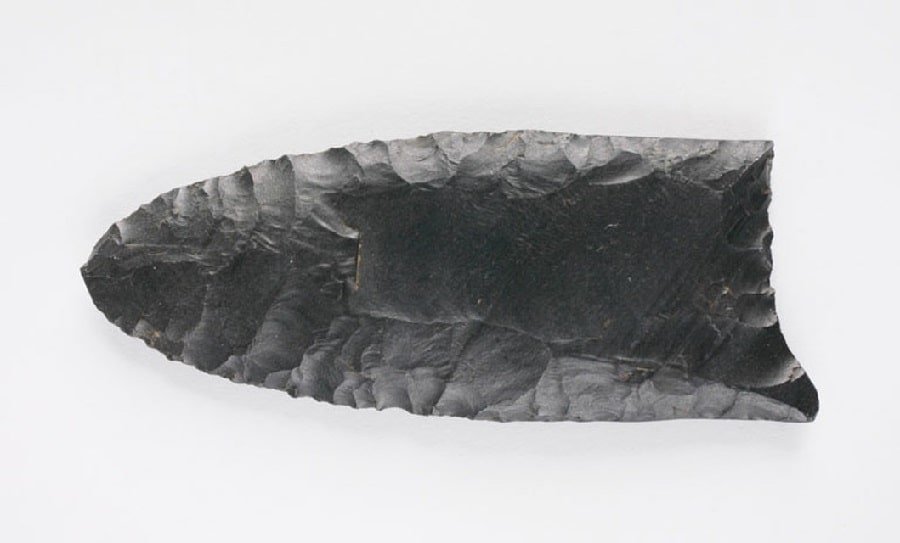
The Reach of the Clovis People
The current research doesn’t necessarily debunk the fact that the Clovis people spread into South America. Actually, Clovis sites with their famous Clovis points have been found in Central America and even all the way into Venezuela.
Still, while their widespread presence in Northern America is a feat in and of itself, it is unlikely that large groups of Colvis migrated to the Southern continent. We can say so because of the elaborate DNA analysis of the little human remains that have been found of the Clovis people.
The DNA was compared with the DNA of people living over a span of 10,000 years in Belize and other countries in Central America. Here, they found an almost exact match with the ancient Clovis culture.
READ MORE: Ancient Civilizations Timeline: The Complete List from Aboriginals to Incans
However, the same study also looked at the genetic evidence of Clovis’s presence in South America. In the southern part of the Americas, no relation with the Clovis people was found. The venturing into Venezuela might therefore be rather an adoption of their technology rather than the actual people moving there in large groups.
How They Came into North America
The ancient Clovis people ventured into North America during the last ice age. They are one of the few populations who are likely to have used the land bridge between Siberia and Antarctica.
Because of the abundance of ice during the last ice age, sea levels dropped in the Pacific Ocean. Because the sea levels dropped, the area between the eastern tip of Siberia and the western tip of the Americas dried up. Therefore, they could’ve walked across it and started their human occupation.
Mind you, it wouldn’t be the easiest of trips. Everything that surrounded them was ice and, on top of that, Siberia isn’t necessarily famous for its abundance in vegetation anyway. So saying it was a hassle to get across might be an understatement.
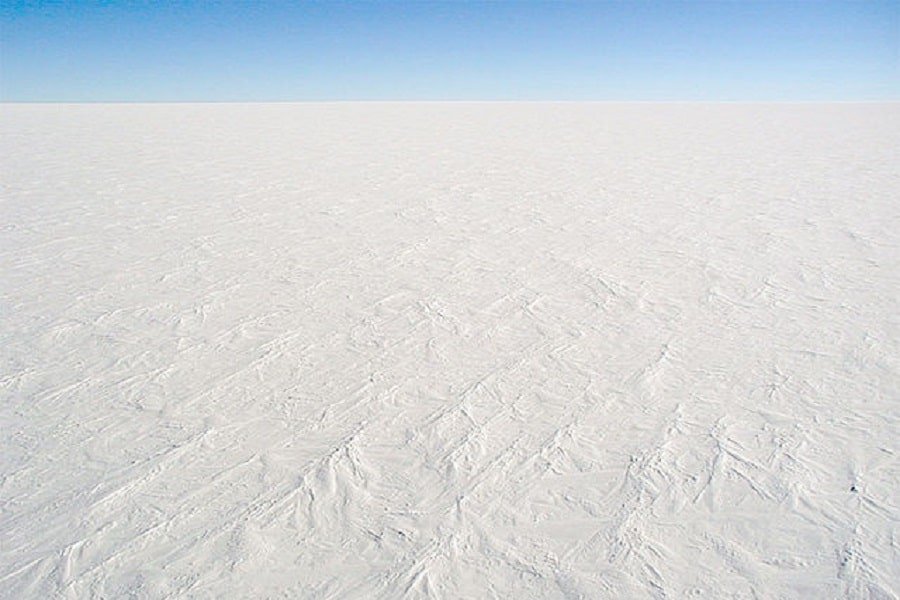
Why Were They Called the Clovis People?
The name ‘Clovis people’ simply comes from the town of Clovis, New Mexico. The earliest and most important Clovis points that were discovered in North America were close to the small town. The archeologists decided to take the easy route and name the population to the nearby town.
What Did the Clovis People Look Like?
The DNA of Native North American peoples has been highly linked to the DNA of the Clovis. So there might be some traits that are similar between them. Other than that, it is believed that Clovis’ roots are in Southeast Asia. Therefore, they might draw similarities with the people from that area. However, the Clovis era was around 13,000 years ago, so they would’ve looked distinctly different from modern people either way.
Really though, there is relatively little known about the appearance of the Clovis people. It’s a guessing game, but we can provide some pointers simply based on their ancestors and descendants.
Are There Any Human Remains from the Clovis People?
There is only one human skeleton that can be traced back to the Clovis people. Scientists are certain the boy belongs to the group from ancient North America because it was surrounded by Clovis tools. It’s a small boy who was 1 to 1,5 years of age and he is known as one of the oldest human skeletons in the Americas. The boy was found at the Anzick Site in Montana, United States.
After DNA analysis, the estimation is that 80% of all modern Native Americans are descendants of the family of the boy. The remaining 20% of Native American peoples have a close relationship with the Clovis family. The close link with the Clovis family isn’t something that is evident in any other group of people on Earth.
So in sum, all Native North American Peoples are in some way related to the Clovis boy! Even the researchers themselves were surprised by this result. Of course, the boy lived more than 12,500 years ago, so over time the family tree grew.
In the same vein, Ghensis Khan has a small country of descendants too: 16 million. The case of the Clovis boy is not a unique case, but it is definitely fascinating.
After the DNA analysis, the remains from the body were reburied in cooperation with different tribes in North America. Specifically, the boy was buried close to where he was found, in Montana.
What are the Clovis Most Known For?
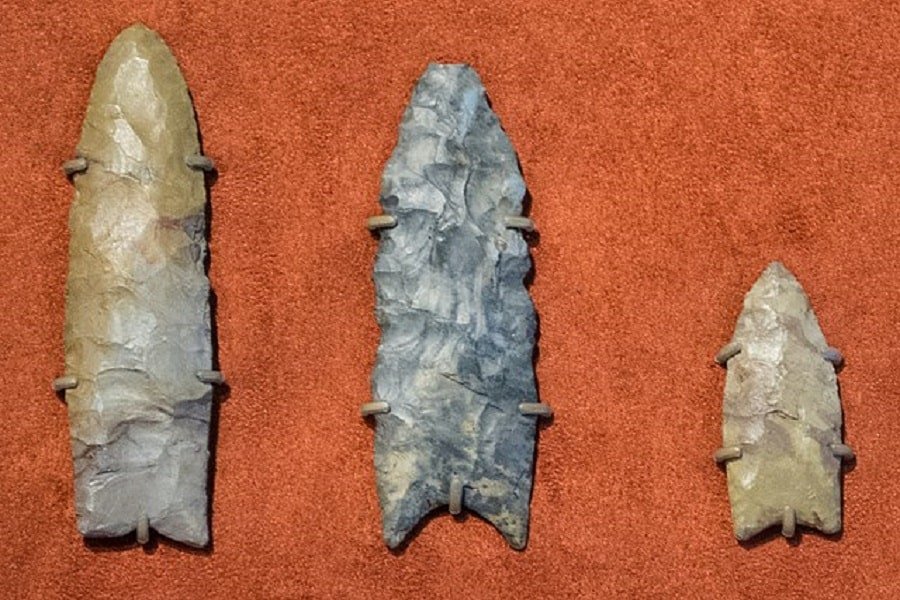
Stone tools called Clovis points are the most characteristic feature of Clovis culture. They’re projectile points made of brittle stones, resembling the point at the top of a spear. The Clovis spear point was thrown at mammoths and other animals in order to kill them. Typical Clovis points were normally a third of an inch thick, two inches wide, and about four inches long.
Clovis points were found all over North America and in lesser numbers in the north of South America. Per place, their design differs quite a lot, depending on the type of animals they were hunting. All the known points are dated between roughly 13,400 and 12,900 years ago.
The Clovis people were partially a hunting tribe. And they liked their prey big.
Were the Clovis the First to Use Spear Points?
There is a long-running debate over whether the Clovis spear points were invented by the population itself, or if they were inspired by other populations. Similar spear points have not yet been found in Southeast Asia; the area where the Clovis probably migrated from. So it’s safe to say they weren’t inspired by their (even more) ancient ancestors.
Some archeologists link the Clovis points to similar spear points that were produced in the Soutrean culture in the Iberian peninsula of Europe. Their argument is that the technology migrated all the way from Europe to the Americas and hence, into the Clovis culture.
However, this argument seems to be very unlikely since there is no genetic evidence for European ancestry in Indigenous North America.
Besides these, earlier examples of spear points have been found in the Americas. At the moment, the earliest discovery is dated 13,900 years ago, some 500 years before the typical Clovis points spread over North America. So if anything, the Clovis people probably obtained their technology from their predecessors who were living in North America before the Clovis era.
Archeology of the Clovis Points
The archeological research of the Clovis points has been going on since November 1932, resulting in more than 10,000 points being discovered. Clovis points are spread over at least 1,500 locations. Based on the archeological evidence, they seem to have emerged rapidly but saw an even faster decline.
The problem with dating stone objects is that they are most likely subject to controversy. This is mainly because it’s hard to determine whether an object actually belonged to a certain culture or not. While there is often a certain continuity in terms of architecture and design within a particular culture, there are always outliers.
So to attribute all spearheads to the Clovis people might be a bit of a stretch: some might belong to other ancient groups. In that sense, it might actually be that it’s the technology itself, not the Clovis people in particular, that spread so rapidly across the Americas.
If you’re another population that’s also hunting mammoths, you might as well want to use a spear instead of your bare hands right?

Different Types of Clovis Points
The stone that was used for a Clovis point differed per instance. The ancient people of North America probably traveled great distances just to obtain a certain stone that was usable for killing large animals. Most of the Clovis points are chipped from obsidian, jasper, chert, and other fine stones.
Their edges can be incredibly sharp and they extend from a broad base to a small tip. The concave grooves at the bottom are called ‘flutes’ and might have helped to insert the points into spear shafts. Since these were most likely wooden, the spear shafts vanished over time.
It’s quite possible that an average Clovis point would break due to the impact on the bones. However, the bigger ones were attached to a sort of spear and were probably capable of being reused.
We can say so because the bigger ones had a different design with different pressure points. The Clovis points are made by applying varying amounts of pressure on the different areas of the stone: more pressure on the outside to make it sharp, and less pressure on the inside to keep the solid base.
Where Have Most of the Clovis Points Been Found?
Clovis archaeological sites in North America are rare, and there is not one Clovis site that has vastly more Clovis points than the other. The most popular one might be the Anzick site, in Montana, United States. It’s a burial site where a total of 90 Clovis artifacts have been found. Eight of those artifacts were Clovis points. Another important one is the Murray Springs site.
The Clovis sites where Clovis points are found are different in nature in almost any instance. Some of the spearheads are found on a site where a single-episode kill occurred. Others are found where multiple large game animals have been hunted. Yet others are found on campsites and caches. However, these latter two are extremely rare.
Campsites are particularly rare since the Clovis people were nomads. Of course, they did need a campsite where they might’ve stayed for a couple of days.
Another important one is the Blackwater Draw site. It’s a testament to the Clovis hunters and their ability to seemingly kill big animals with the greatest of ease. Well, maybe not the greatest of ease. But still, a fair bit better than the average human being walking the earth today.
The Blackwater Draw site is also one of the places with the greatest number of mammoth bones and accompanying bone scars from the Clovis points.

How Did the Clovis People Live?
The ancient culture from North America flourished on the lush grasslands that were populated with large animals, like mammoths, giant bison, dire wolves, camels, saber-toothed tigers, ground sloths, and even turtles. While this might indicate that they exclusively hunted large game animals, they actually thrived on an omnivore diet.
The Clovis Diet
Research has shown that the Clovis people did eat their fair share of mammoth and giant bison. However, they also hunted many small game animals, like rabbits, deer, mice, and dogs.
Still, most of the evidence only gives an indication of the different types of meat that the ancient North American culture ate. So why do scientists still claim that they had an omnivore diet, maybe even dominated by plants instead of meats?
It has to do with the evidence they were able to find with the prevalence of plant foods in the Clovis diets. Some research sites did indeed indicate evidence of plant foods, like goosefoot seeds, blackberries, and hawthorn nuts. The evidence is, however, small, which has to do with the poor preservation of plant remains at any archeological site.
The blood of animals can be identified on the Clovis points for a long time after the initial killing. However, plants don’t leave remains like that and can be hard to identify.
So, the proportion of plants as part of the Clovis diet is hard to determine. What can be said is that their plant intake differed from the later population. Post-Clovis Archaic groups adopted acorns or grass seeds as their staple, but it is generally accepted that the Clovis culture didn’t have the techniques to process these foods properly.
Beyond evidence about what they eat, there is not a lot known about the Clovis culture and their customs. Neither do we know a lot about the kind of clothes they wore, or what their beliefs were. But then again, this is about 13,000 years ago. Finding remains of populations that old is remarkable in itself.
Hunter-Gatherers
The fact that the Clovis people were highly mobile, gathered a wide range of plants and hunted animals for food normally makes them a hunter-gatherer tribe. And it’s definitely true if we purely look at the archeological and physical evidence that we have.
But again, we simply do not know a lot about these ancient people. The idea of hunter-gatherers is normally equated with the idea that these people were just simple bands of people without any form of complexity.
In other words, because modern people find themselves in ‘complex’ cities and societies, they are by definition smarter and more knowledgeable than the ancient people.
Some anthropologists point out that we can’t assume that ancient hunter-gatherers had a lesser capacity than we do today; be it in brain capacity, logical capacity, emotional capacity, or whatever else.
In the same vein, we cannot assume that all the hunter-gatherer tribes were the same in their essence. There is actually a high diversity between them, potentially even higher than in different towns and cities in our modern-day world.
While archeological research helps tremendously with understanding the physical aspects of ancient cultures, it doesn’t tell a lot about the actual complexity of their culture and where they should be placed on the spectrum from ‘hunter-gatherers’ to ‘modern-day’ societies.
In fact, many anthropologists agree that there is no such spectrum, and every group of people is complex and knowledgeable in its own way. So, that’s the case with the Clovis culture. The question is, in what way are they complex? We can only guess by asking these different questions.
For example, how were they able to spread over such a vast area? Or how do you kill a mammoth with a Clovis point, to begin with? What type of social structure is needed to do so? And could they just kill animals when they wanted to or was there a custom attached to it?
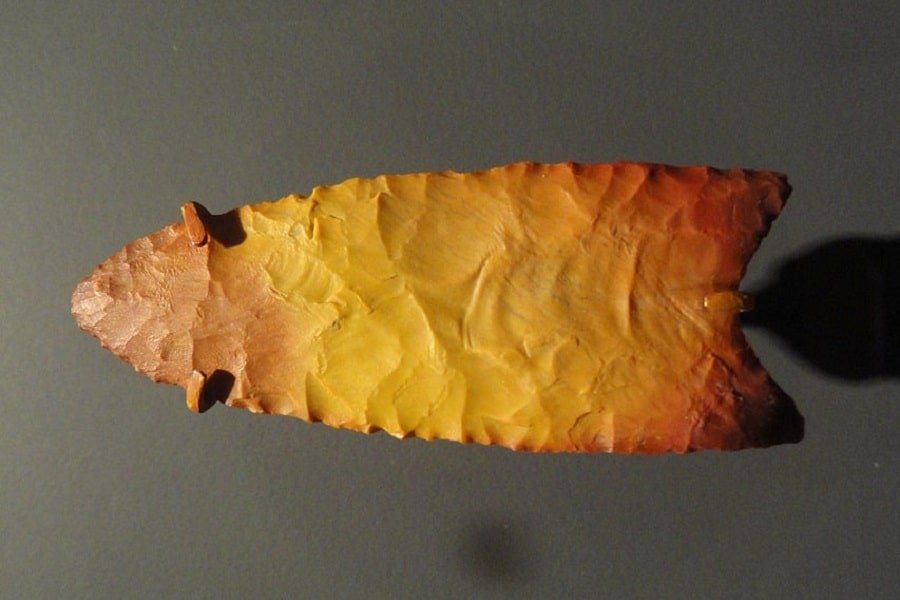
What Happened to the Clovis People?
About 12,900 years ago, the Clovis culture seemingly came to a sudden end. Most likely this is because the culture split into separate groups and each adapted to its own unique environment. This, too, would allow a huge linguistic, social, and cultural diversion to emerge over the next 10,000 years. So the Clovis weren’t killed, they just dispersed into different cultures.
But what indicates the ‘end’ of a culture? This is a legitimate question, with a logical answer. The Clovis people settled in North America, or rather eastern New Mexico, during the last age. The last ice age came to an end around the time that the Clovis people just emerged. So, they needed to adapt to the changing climate.
While the population was able to adapt, their hunting prey didn’t. So the Clovis hunting practices had to adapt to what was around at the time. Due to the large spatial differences, the scattered tribes started hunting different animals and eventually created different habits altogether.
Legacy of the Clovis People
In a short time span, the Clovis population changed ancient North America for good. Not only did they spread new technology in the form of Clovis points. They also brought other forms of technology, like notched throwing sticks, or atlatls.
Their technology allowed for a quick dissection of the killed animals on site. Since they were living in an ice age and hunted, amongst others, big game animals, the ability to prepare the flesh at kill sites turned out to be an essential asset. However, their techniques became outdated with the end of the last ice age.
The actual nomadic lifestyle of the Clovis culture didn’t disappear. Not at all, actually. It continued for thousands of years after their disappearance.
While the Clovis people are regarded to be part of ‘prehistory’ (so simply the period we know very little about), more recent records that are substantial enough to call ‘history’ show people with the same nomadic lifestyle in North America.
READ MORE: After the Ice: A Global Human History, 20000–5000 BC
There are ample tribes in Eastern New Mexico that follow the same form of life. While they probably live differently, the Clovis people were a big inspiration for such a nomadic lifestyle.
So while the Clovis points might strictly belong to the ancient culture, the overall characteristics of the Clovis culture turned out to be archetypical for many years to come.